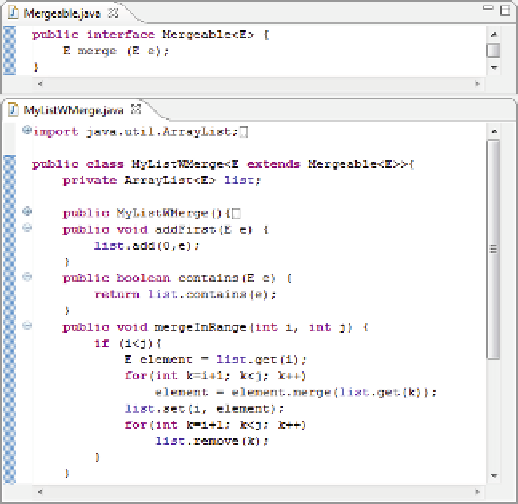Information Technology Reference
In-Depth Information
Fig. 2.
The interface
Mergeable<E>
and an excerpt of the Java class
MyListWMerge<E>
After defining the refinement mapping from module
LWM
to our candidate imple-
mentation, C
ON
G
U
instruments
MyListWMerge.class
so that, during the execution
of any program that uses
MyListWMerge
, the behaviour of this class (made precise in
the next section) is checked against what was specified in
ListWM[Mergeable]
.More-
over, the behaviour of the classes used for instantiating
E
in the creation of objects
of
MyListWMerge<E>
is also checked against what was specified in
Mergeable
. Sup-
pose, for instance, that we have a program that includes a class
Color
that implements
Mergeable<Color>
and, another class, that creates and manipulates objects of type
MyListWMerge<Color>
. In this case, the behaviour of
Color
is checked against what
was specified in
Mergeable
.
3
Runtime Conformance of Programs against Modules
In this section, we present the notion of conformance of Java programs against specifi-
cation modules that is considered in C
ON
G
U
2 and discuss some key aspects of C
ON
G
U
approach to the runtime checking of this notion of conformance.
3.1
Object Properties Induced by Specifications
The conformance of a Java program against a specification module can only be defined
if a direct connection between the specifications of the module and the classes of the
Java program is provided. As discussed before, in C
ON
G
U
, the correspondence between

Search WWH ::

Custom Search